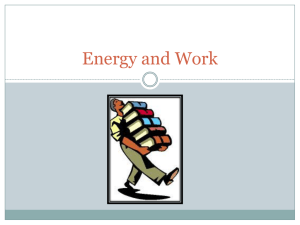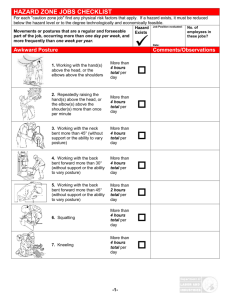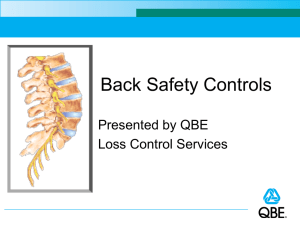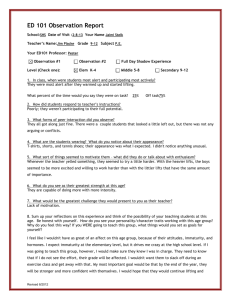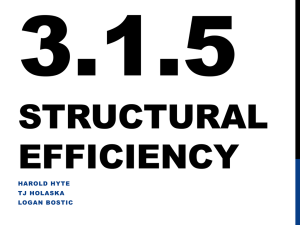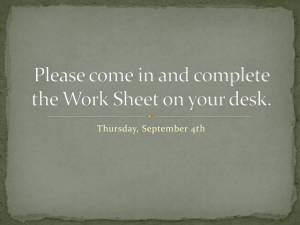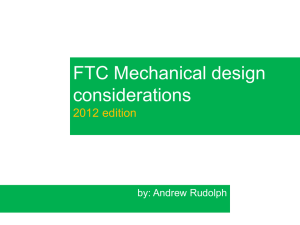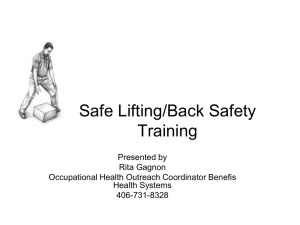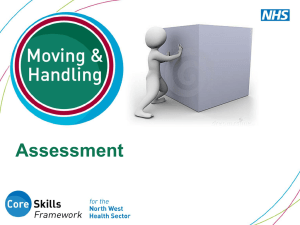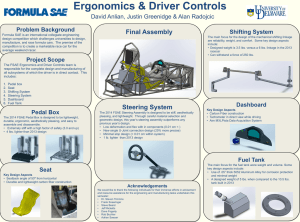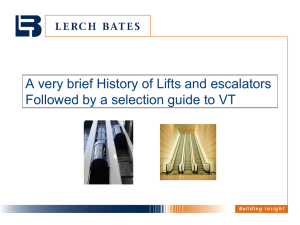Back Injury Prevention - Environmental Health & Safety
advertisement
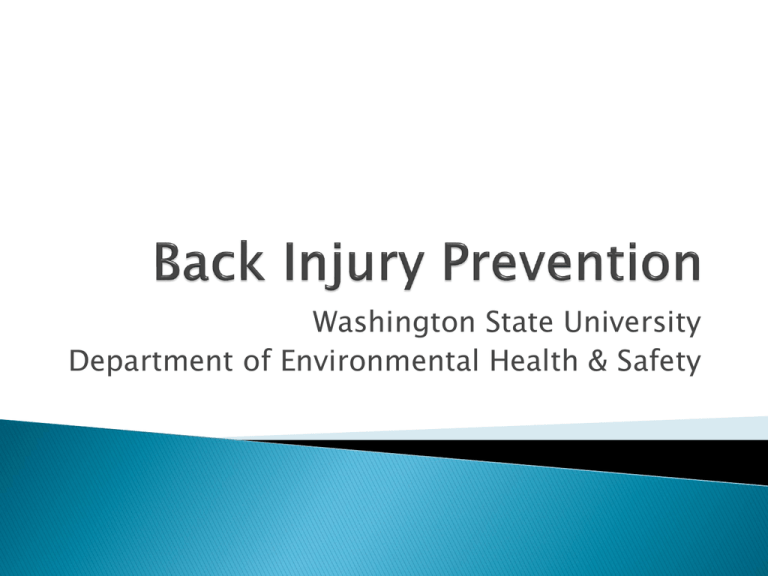
Washington State University Department of Environmental Health & Safety Training Outline Basic Structures & Functions of the Back Common Back Injuries Maintaining a Healthy Back Back Injury Risk Factors Manual Material Handling Proper Lifting Techniques Other Back Stressors Summary of the Spine’s Functions Protection • Spinal Cord and Nerve Roots • Many Internal Organs Base for Attachment • Ligaments • Tendons • Muscles Structural Support • Head, Shoulders, Chest • Balance and Weight Distribution Flexibility & Mobility • • • • • Flexion (forward bending) Extension (backward bending) Side Bending (left and right) Rotation (left and right) Combination of the above Estimated that 85 – 95% will suffer from Low Back Pain Acute events vs. cumulative trauma L5/S1 incurs the greatest stress: Compression Shear Torsion Muscle Sprains and Tendon Ligament Vertebrae Disc Strains Factures Problems General Health Genetics Injury History Recreational Activities Home Activities Work Tasks Lifting, lowering, carrying, pushing & pulling Awkward and static postures We use are backs 24/7: how we live affects our back’s health Reduce Stress Balance Diet Quit Smoking Exercise Strength Flexibility Endurance Neutral Postures Sitting Standing What is Manual Material Handling: It is the … lifting lowering pushing pulling and carrying….. of objects, tools, equipment and supplies. Methods to control back stressors when manually handling materials: Minimize the amount of weight handled Use a material handling device Breakdown/repackage into smaller packages Order smaller size packages So how much can you safely lift? It depends on a number of factors: Who is doing the lifting How frequent are the lifts (lifts/minute) How long is the lifting task (lifts/total time) Is twisting and bending part of the lift Object weight, size, contents, and shape (hand holds) Frequency, duration and intensity are the key factors So how much can you safely lift? It depends on who you ask: CDC/NIOSH – 51lbs. ACGIH – 70 lbs. Washington State Department of Safety & Health repealed ergonomics standard – 90 lbs. Five factors to consider: 1. 2. 3. 4. 5. Object weight (heft test) Object size, contents, shape – hand holds Frequency of the lifts Vertical distance of the lifts Horizontal distance between the object and person The two most critical factors to consider: 1. 2. 3. 4. 5. Object weight – duh! Object size, contents and shape – hand holds Frequency of the lifts Vertical distance of the lifts Horizontal distance between the object and person L5/S1 Disk 36 in. 30 lbs. 12 in. 85 lbs. (30 lbs. x 36 in.) + (85 lbs. x 12 in.) = 2,100 in-lbs. L5/S1 Disk 16 in. 30 lbs. 0 in. 85 lbs. (30 lbs. x 16 in.) + (85 lbs. x 0 in.) = 480 in-lbs. 1. 2. 3. 4. 5. 6. 7. 8. 9. Plan the lift Spread feet shoulder width apart Maintain the curves of the spine Bend at the knees Head up and chin up Lift slowly and evenly Avoid twisting Keep load close to the body! Maintain clear field of view The Diagonal Lift The Power Lift Prolonged Standing Prolonged Sitting Vibration Using Tools Slips, Trips and Falls Pushing and Pulling Prolonged and Frequent Bending, Reaching and Turning
